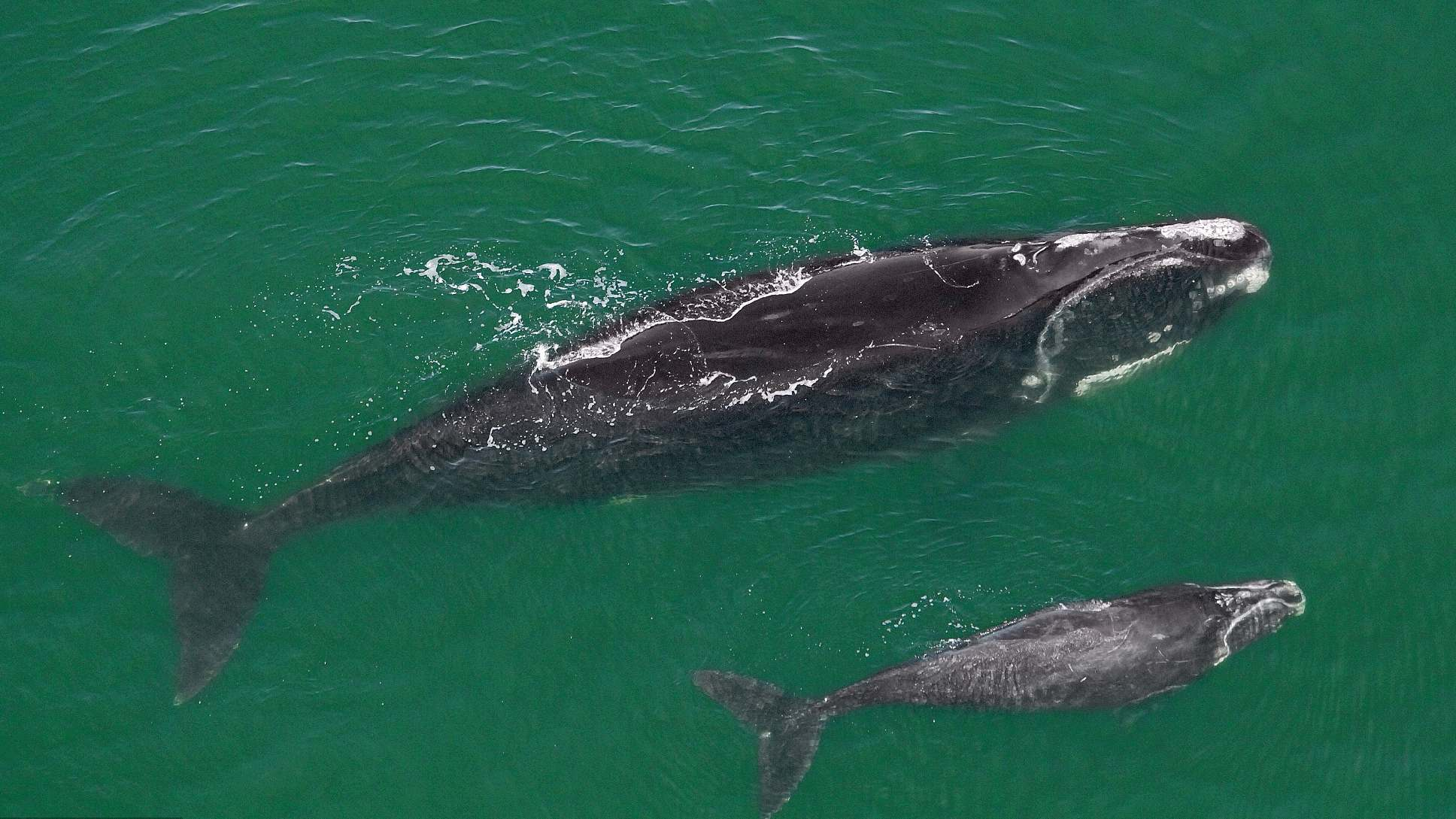The NOAA Northeastern Fisheries Science Center in Massachusetts, US, has been looking closely at the reasons that lead to the slow population growth of the Northern Atlantic right whale. According to results of a study published on Wednesday, scientists and researchers have concluded that preserving the lives of adult females is the key to the whale's population growth.
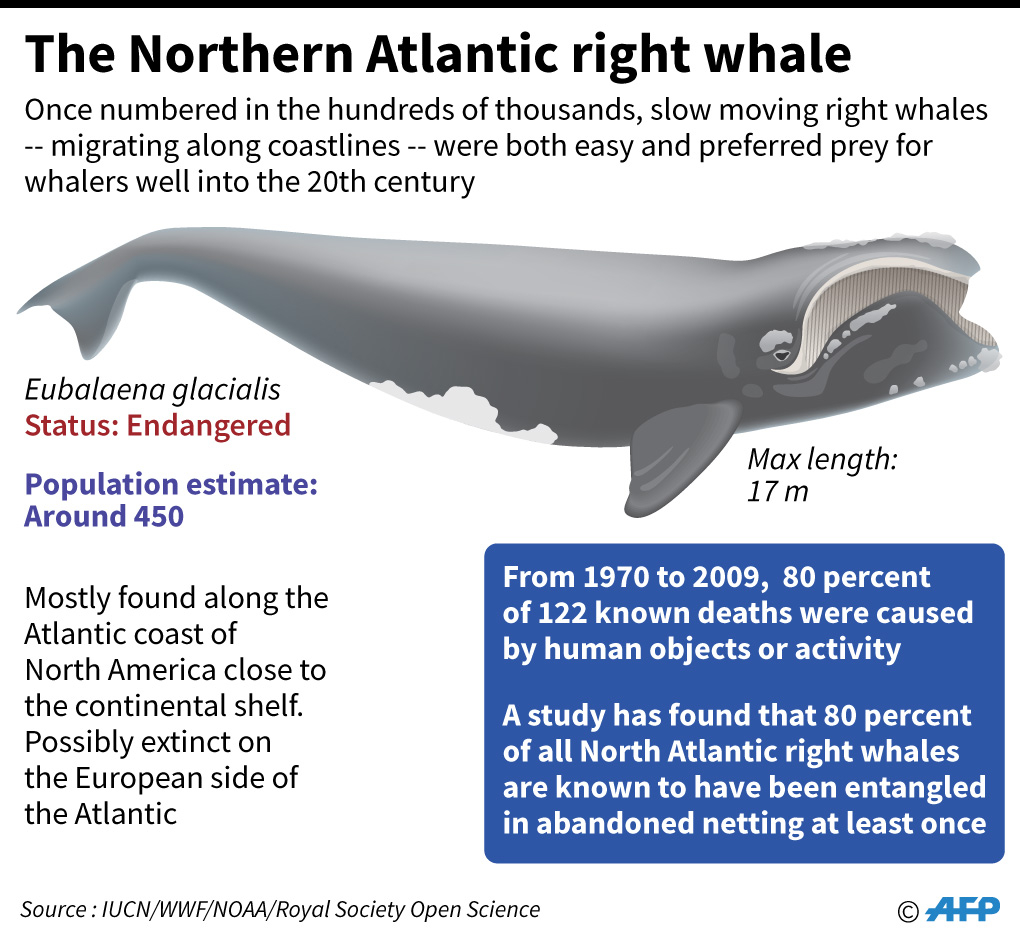
General information about the Northern Atlantic right whale. /AFP Photo
General information about the Northern Atlantic right whale. /AFP Photo
Massive commercial whaling once endangered many species of whales, among these species the right whales were nearly driven to extinction. The right whale consists of three species: the Northern Atlantic right whale, the Northern Pacific right whale and the Southern right whale.
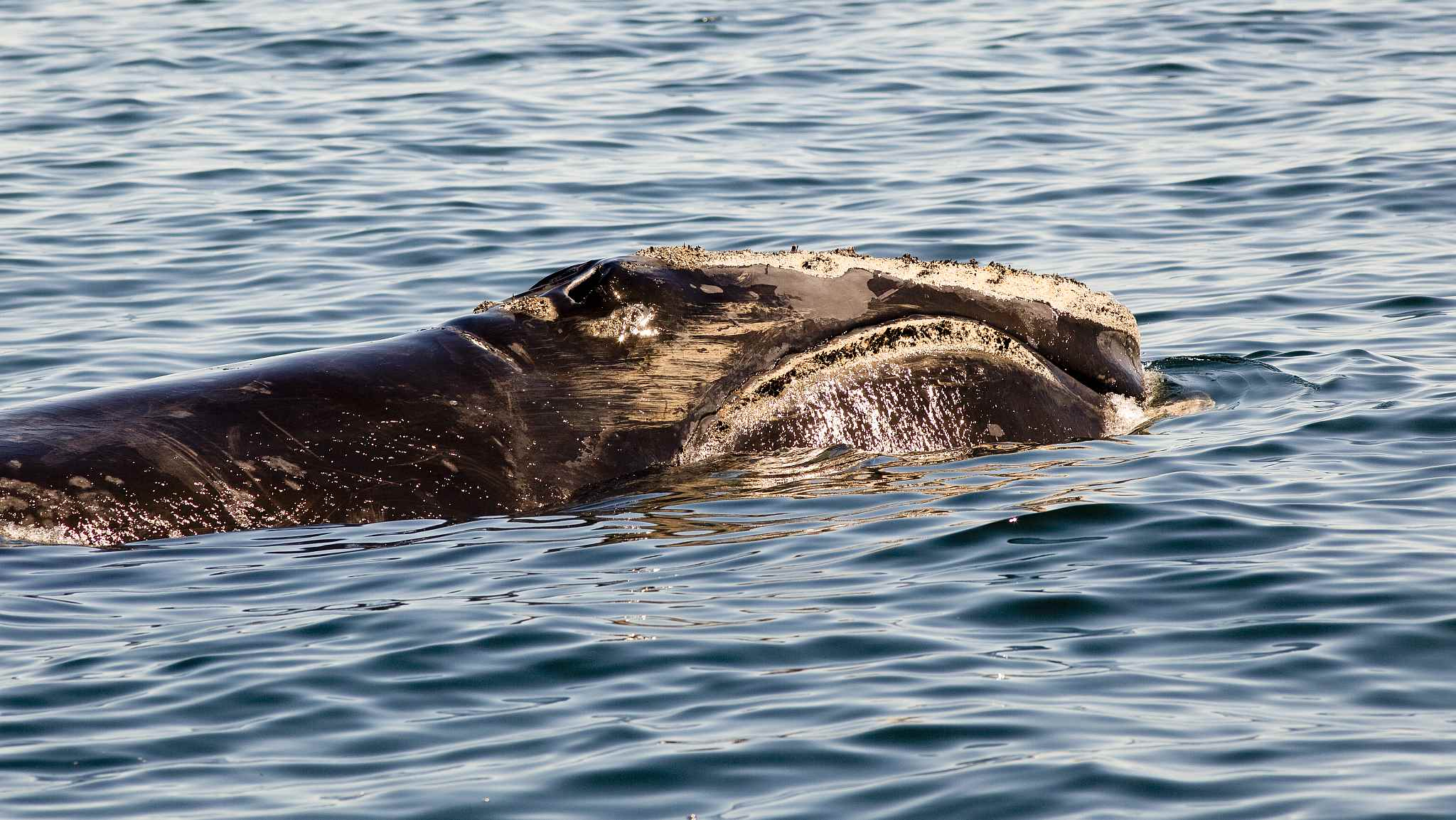
The head of a Northern Atlantic right whale. /VCG Photo
The head of a Northern Atlantic right whale. /VCG Photo
The ban on commercial whaling was imposed more than half a century ago, and the population of the Southern right whale, the sister species of the Northern Atlantic right whale located in the Southern Hemisphere, has recovered much better than the Northern Atlantic right whale, with an estimated population of around 15,000.
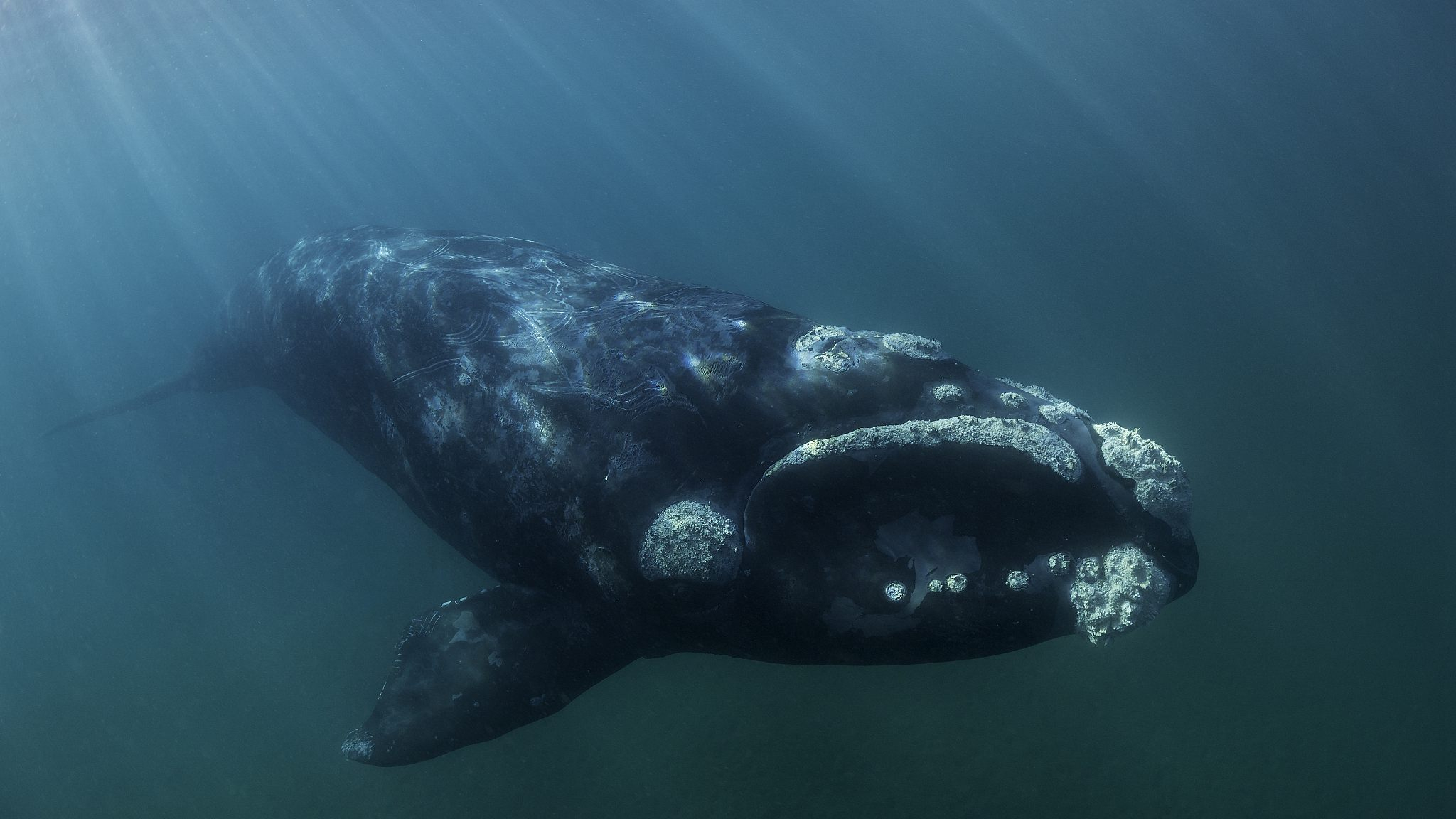
A Southern right whale, sister species of the Northern Atlantic right whale, swims in the sea. /VCG Photo
A Southern right whale, sister species of the Northern Atlantic right whale, swims in the sea. /VCG Photo
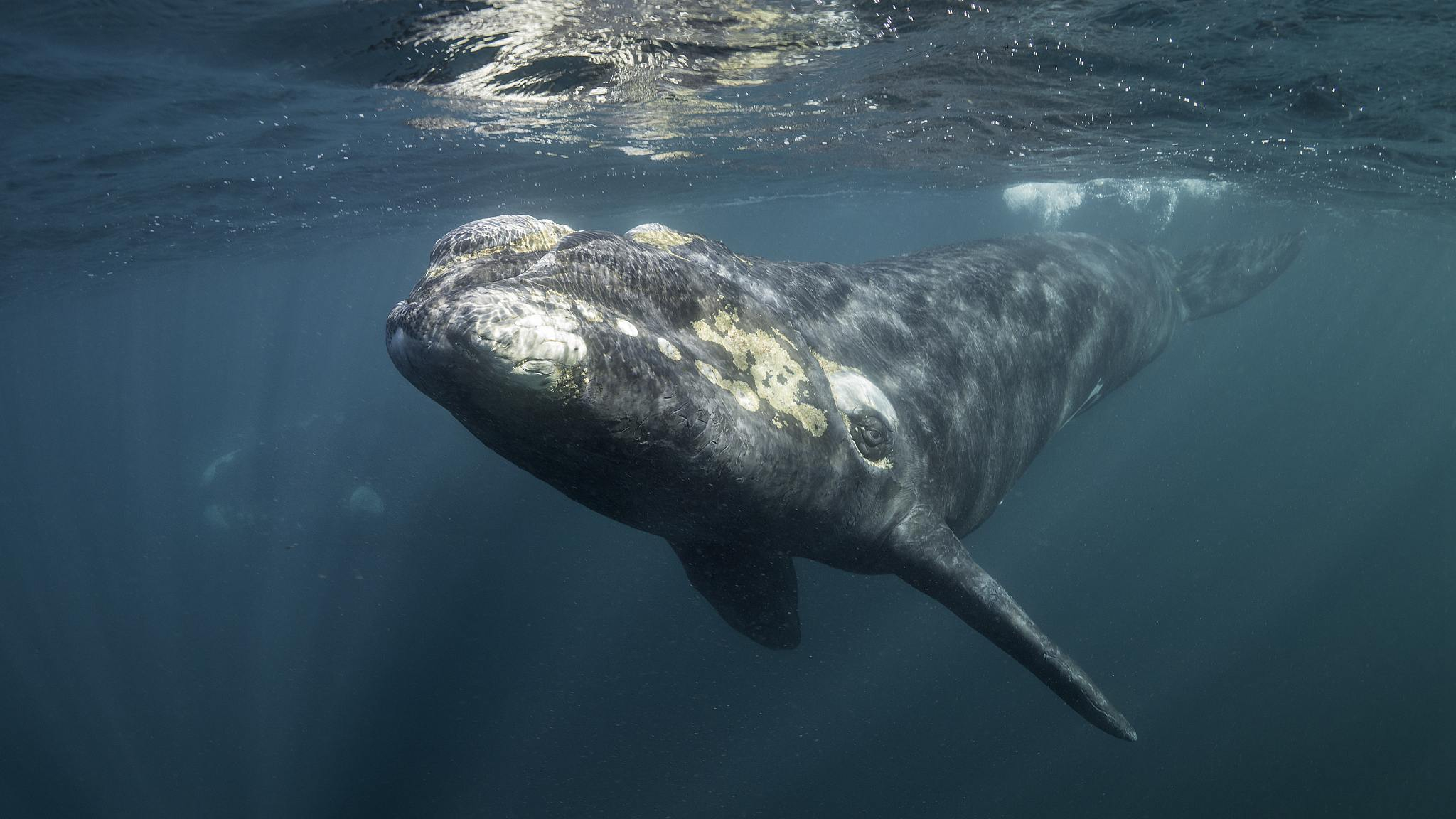
The population of the Southern right whale is in good shape compared to that of its sister species. /VCG Photo
The population of the Southern right whale is in good shape compared to that of its sister species. /VCG Photo
The Northern Atlantic right whale mostly lives in the North Atlantic Ocean, the most industrialized habitat compared to its sister species, and migrates close to shore. The whale's habitat is occupied by heavy shipping, therefore entanglement in fishing gear and collisions with ships are thought to be the main threats to the Northern Atlantic right whale.
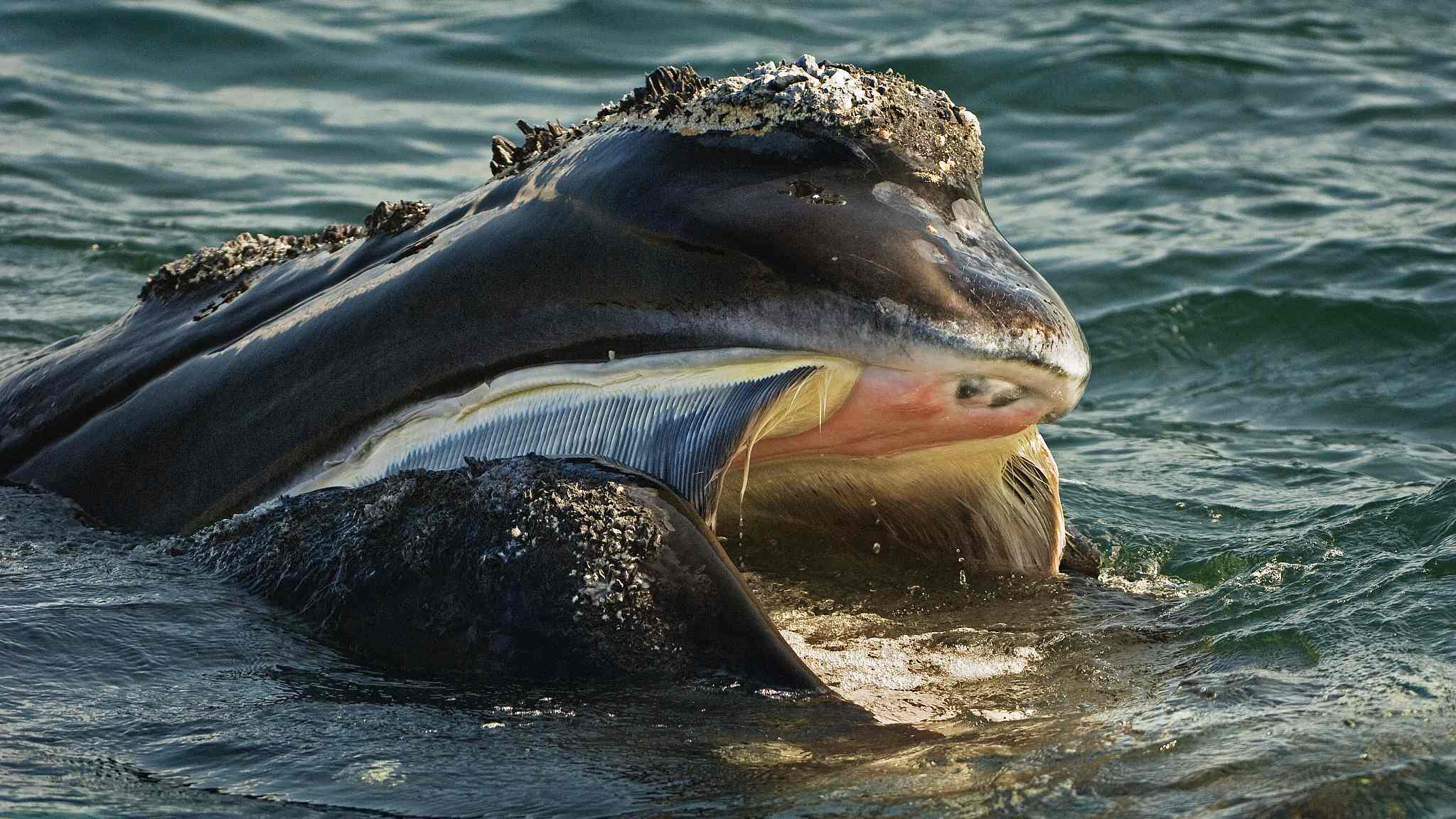
The mouth of a Northern Atlantic right whale. /VCG Photo
The mouth of a Northern Atlantic right whale. /VCG Photo
More than 80 percent of the known Northern Atlantic right whales have been entangled in abandoned netting at least once, and over half of them have been there twice or more. Entanglements can last from months to years, and recovery can take a similar amount of time.
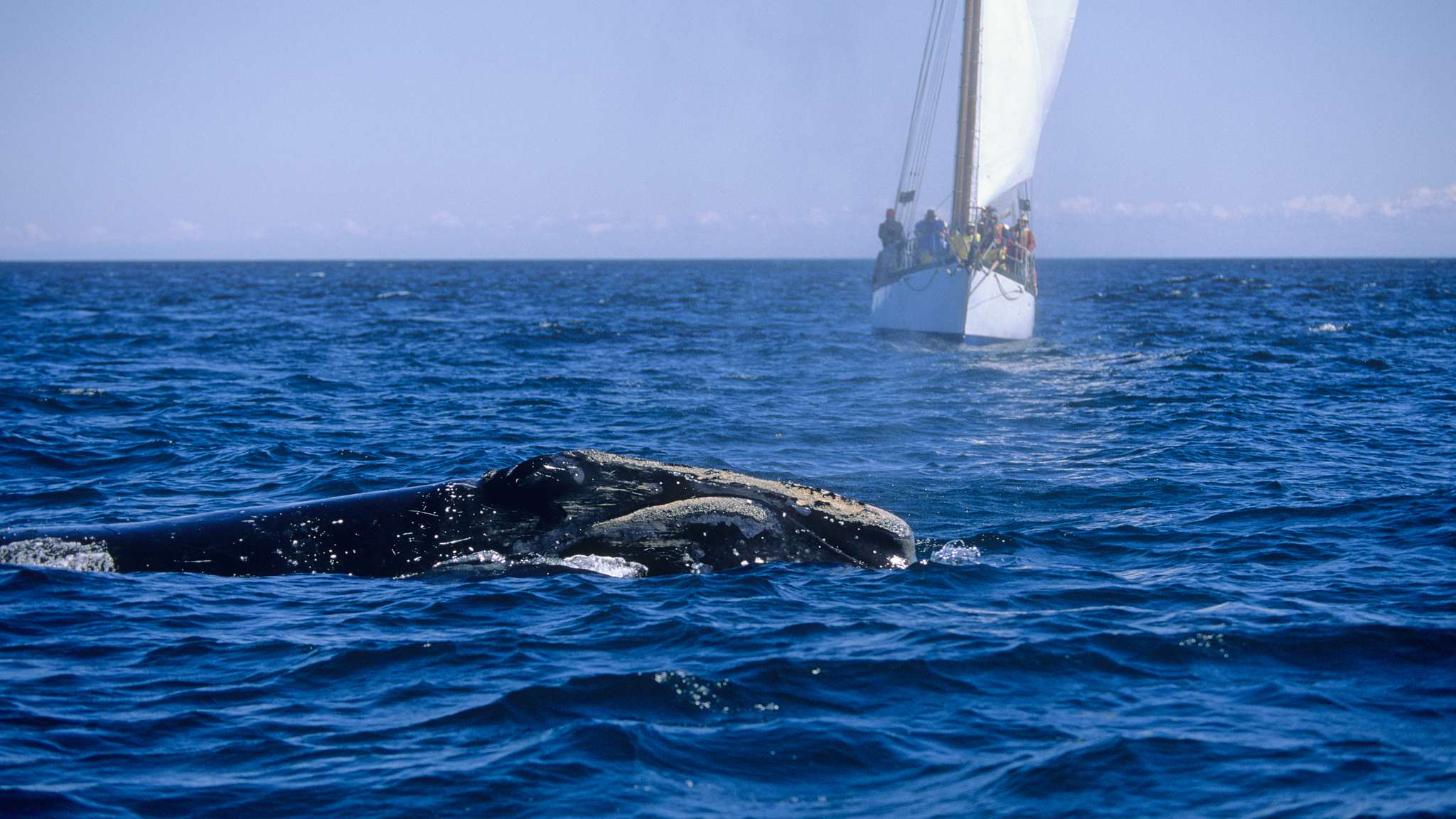
A Northern Atlantic right whale in front of a tour boat. /VCG Photo
A Northern Atlantic right whale in front of a tour boat. /VCG Photo
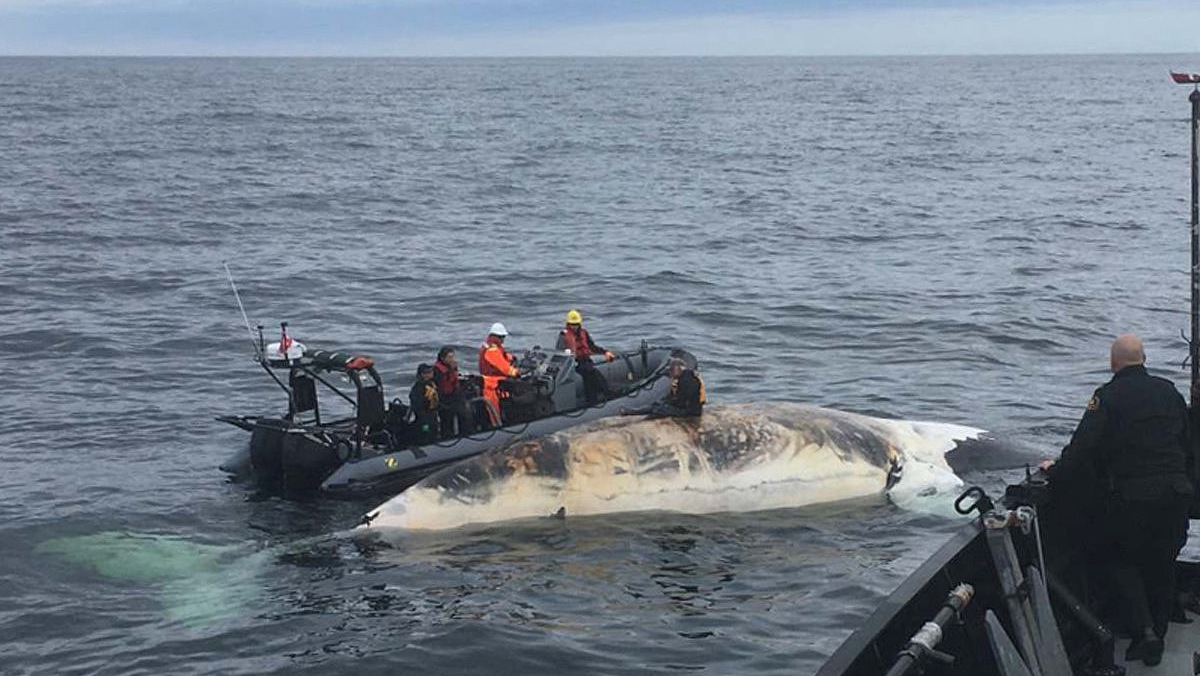
A Canadian crew collects the body of a dead Northern Atlantic right whale. /VCG Photo
A Canadian crew collects the body of a dead Northern Atlantic right whale. /VCG Photo
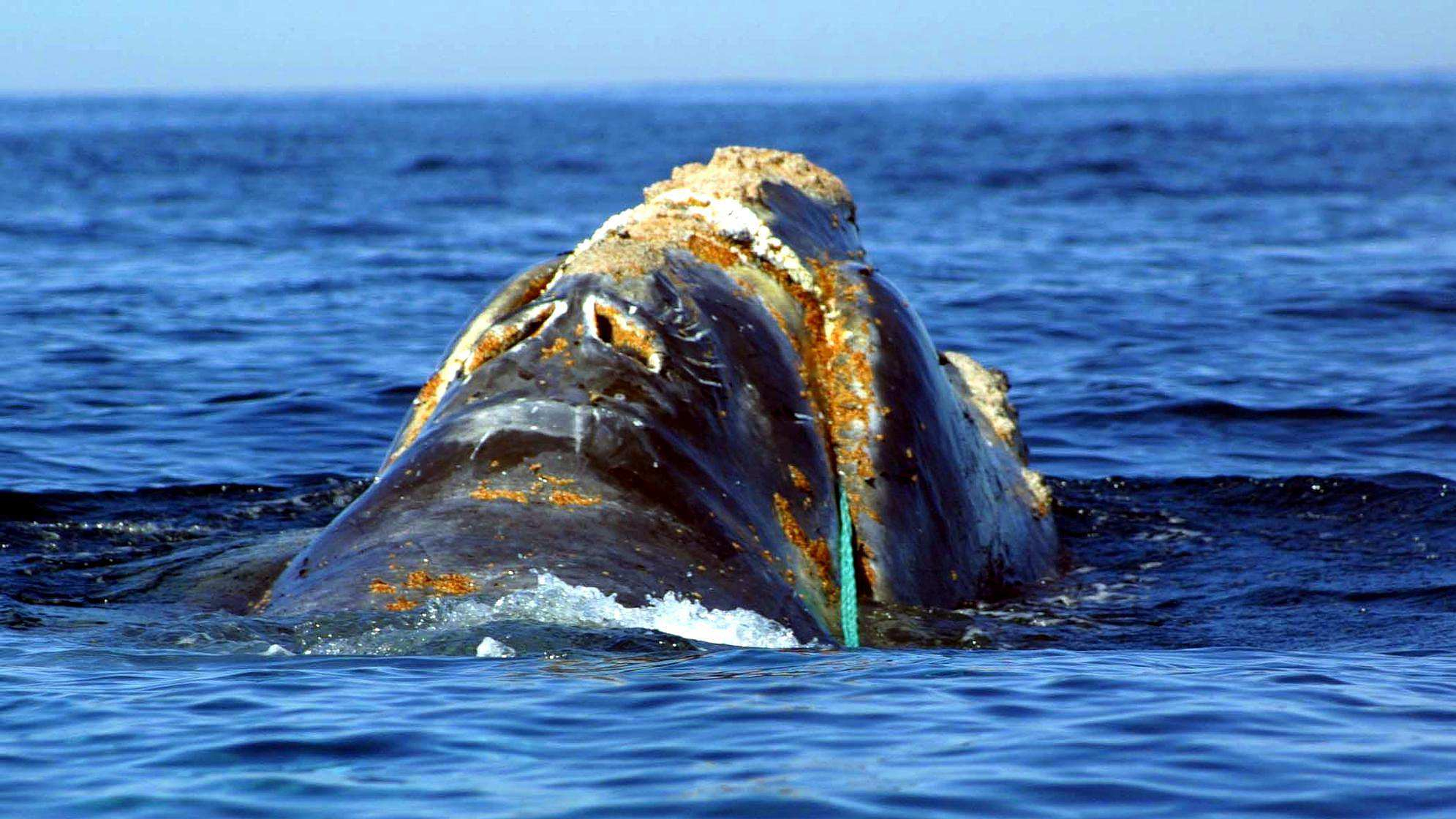
A Northern Atlantic right whale is entangled in a heavy green fishing net near Massachusetts, US. /VCG Photo
A Northern Atlantic right whale is entangled in a heavy green fishing net near Massachusetts, US. /VCG Photo
The female whales forgo reproduction in response to poor body conditions: the lacerations and reduced body weight caused by struggling with fishing nets. When an endangered female Northern Atlantic right whale spends months, even years, disentangling itself from cast-off fishing nets, there's not much energy left for mating and nursing calves.
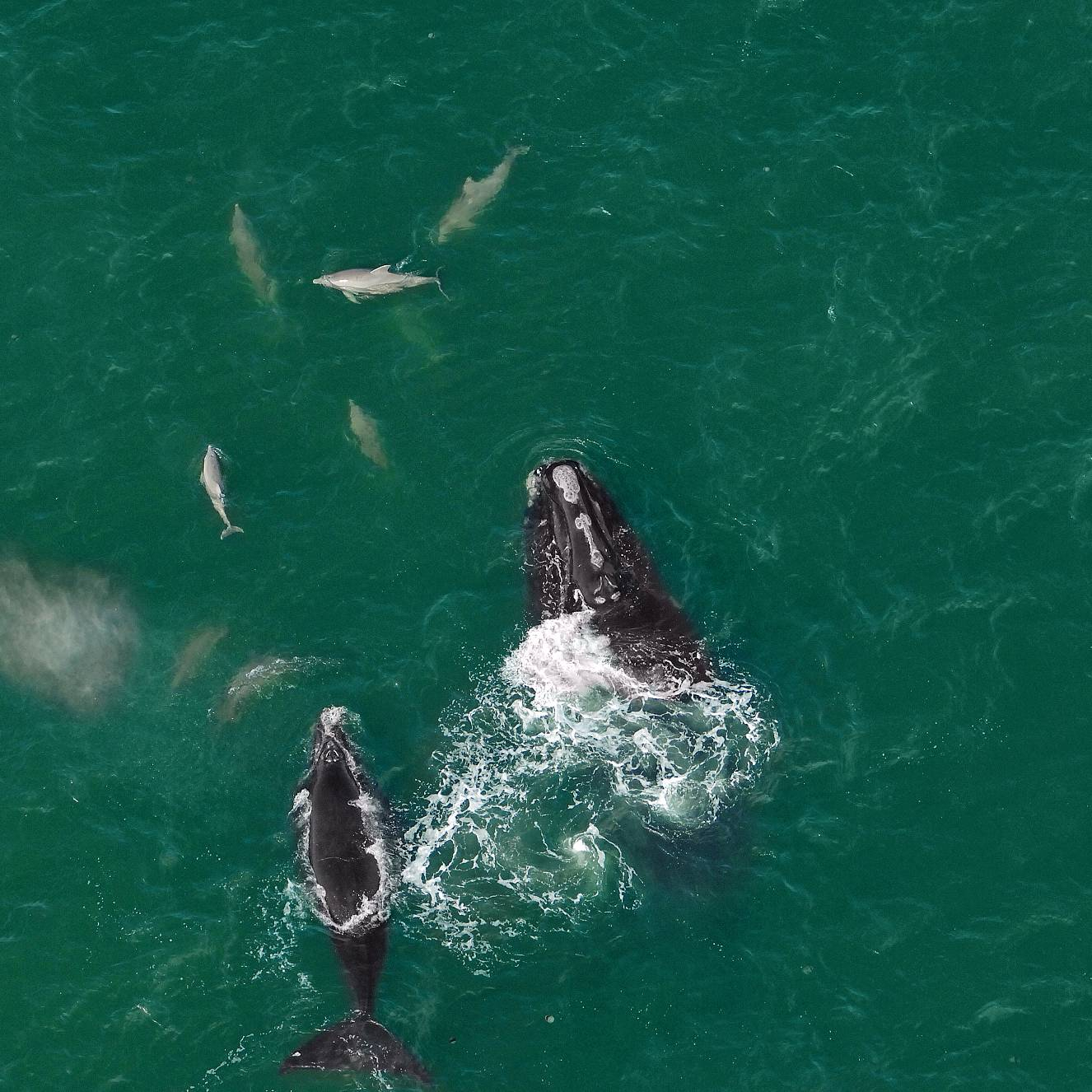
A mother Northern Atlantic right whale and its calf. /VCG Photo
A mother Northern Atlantic right whale and its calf. /VCG Photo
The population of Northern Atlantic right whales is around 450 today. Scientists believe that if the whales had lived without human interference for the last 20 years, the population would be almost double its current number.
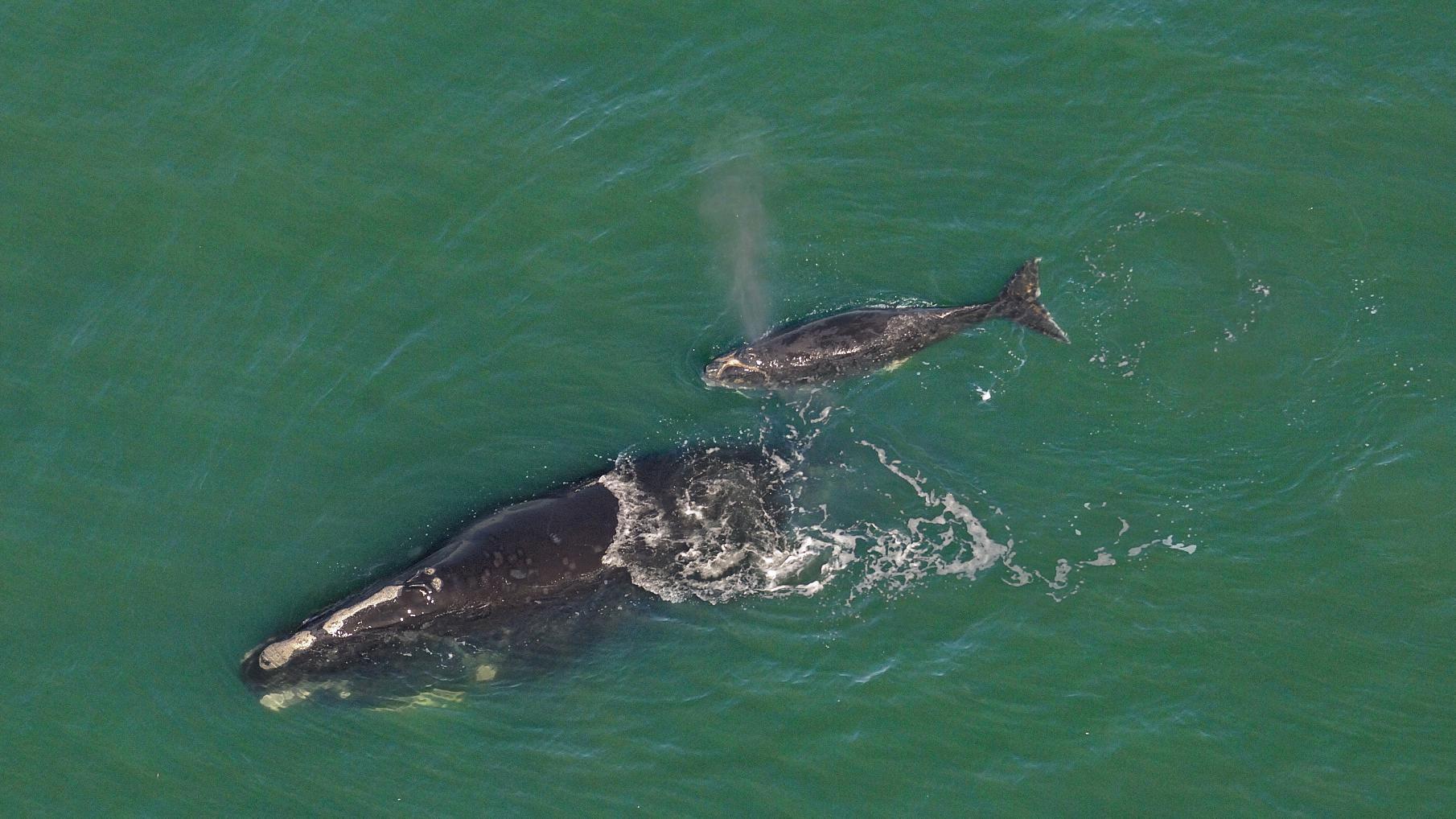
A mother and baby Northern Atlantic right whale are spotted in Florida, US. /VCG Photo
A mother and baby Northern Atlantic right whale are spotted in Florida, US. /VCG Photo
With such a small and slow-growing population, any threats can be fatal to the future of the Northern Atlantic right whale. Living close to the shore also makes it extremely fragile and easily affected by human activities. Therefore it requires more attention from people, especially those in the fishing industry, to help it through this current dire situation.

